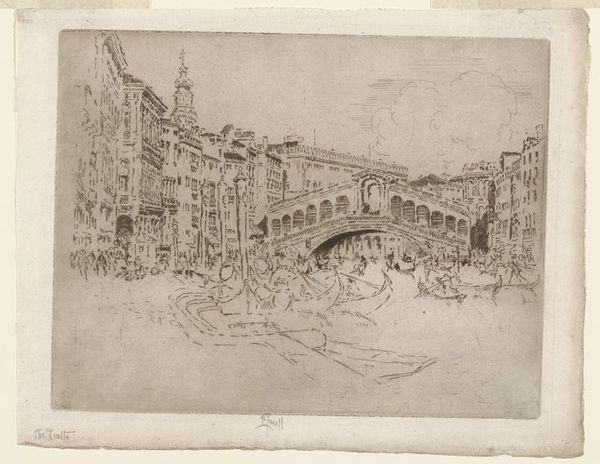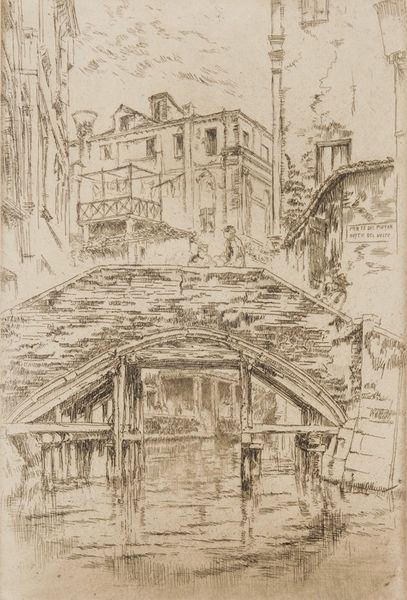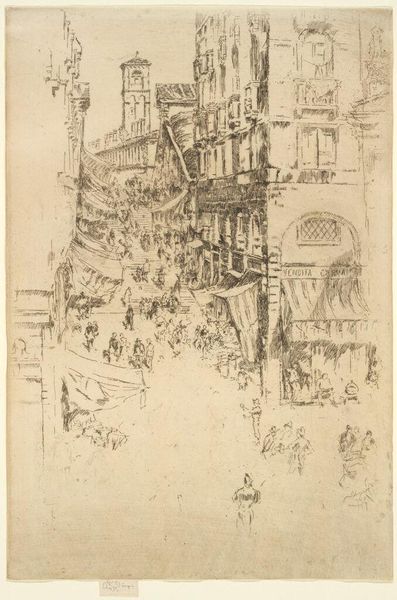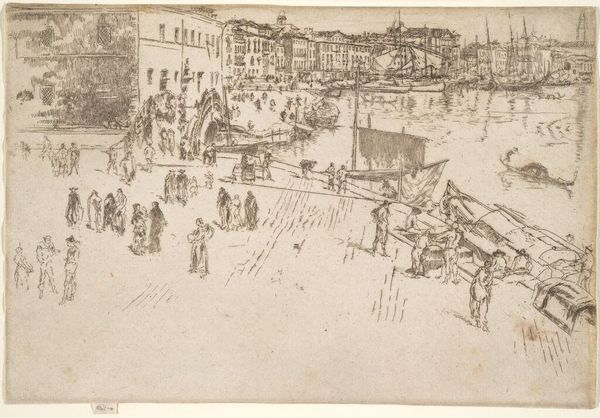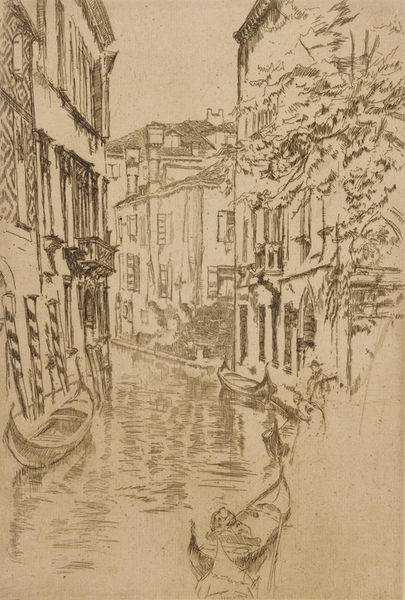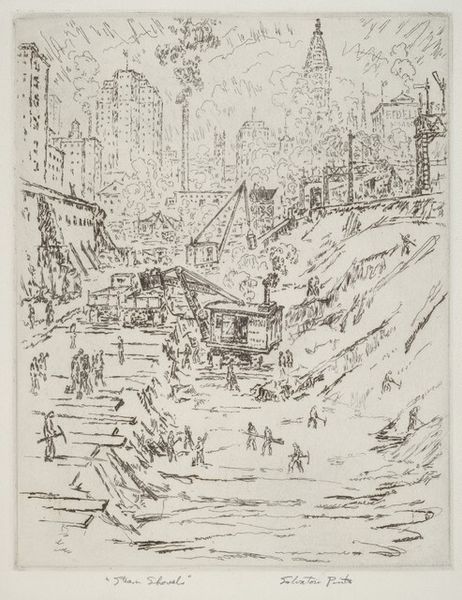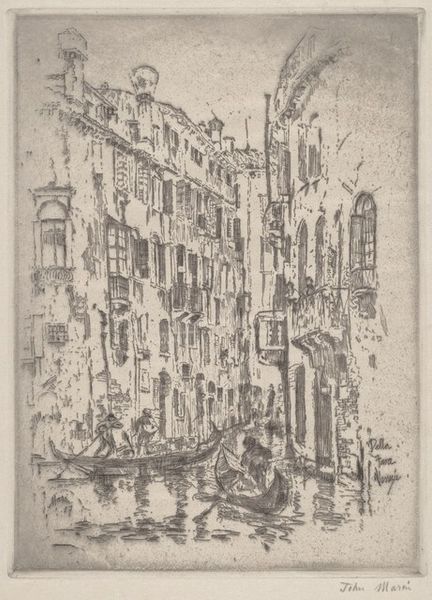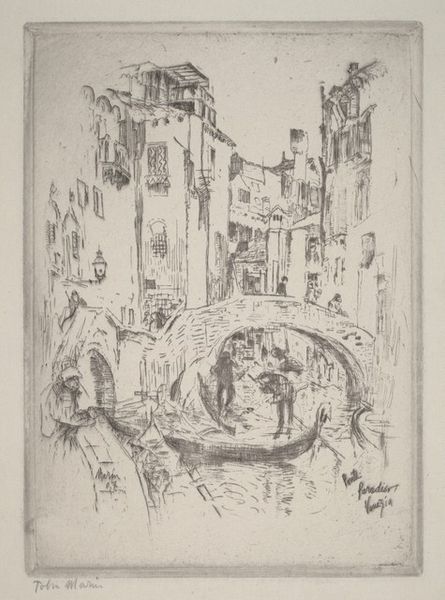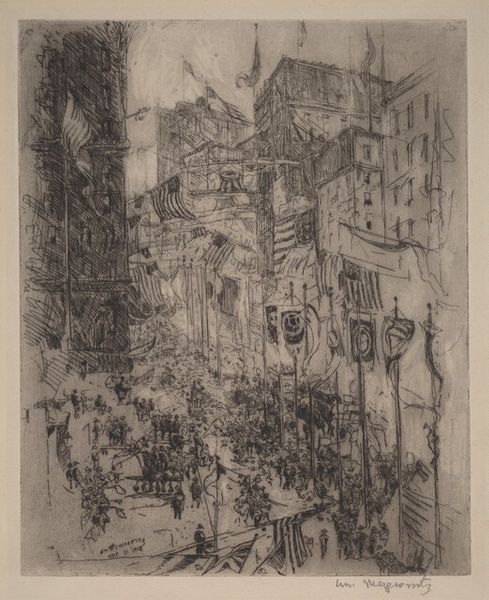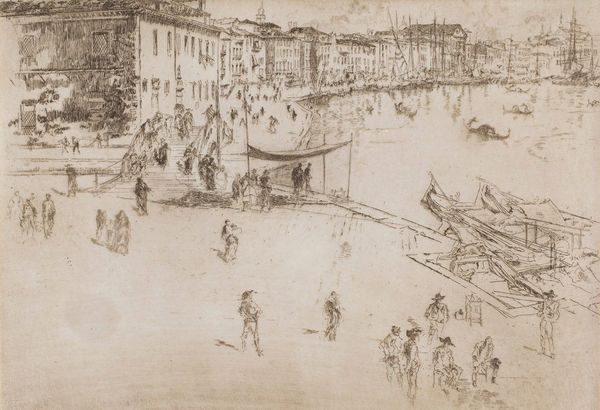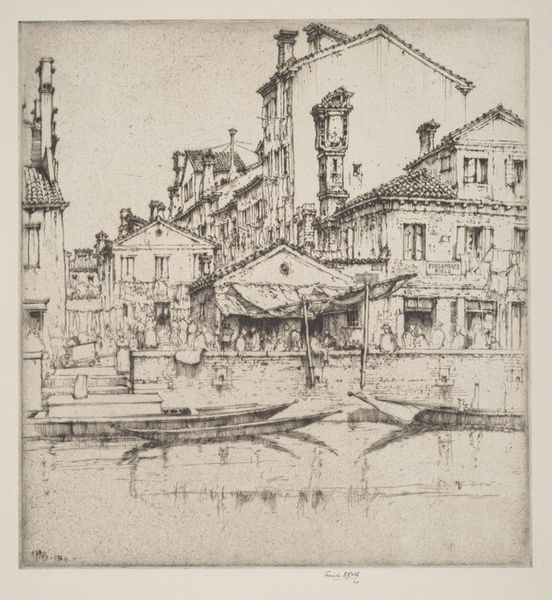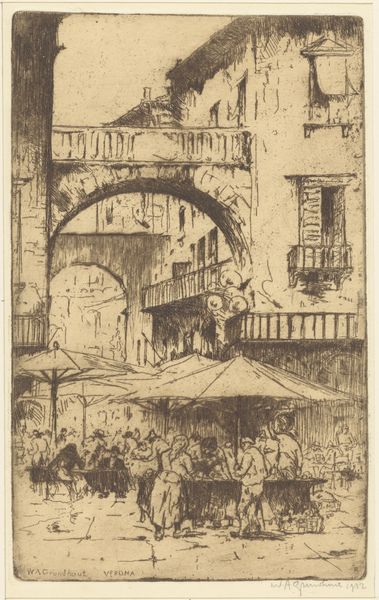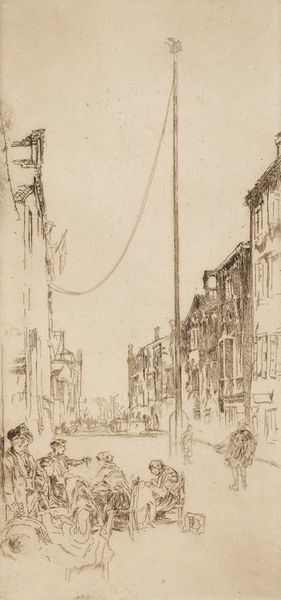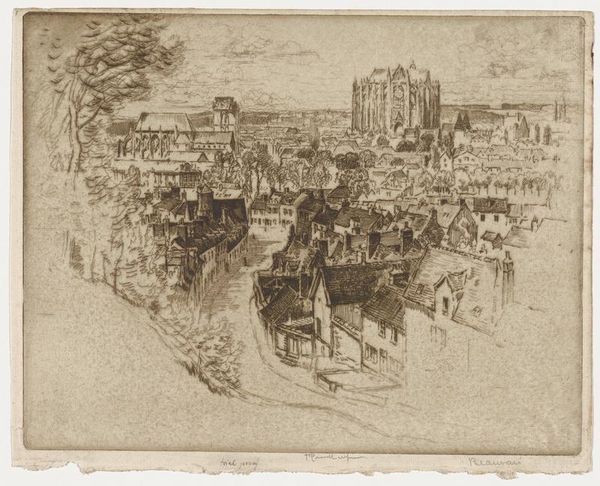
drawing, print, etching
#
drawing
# print
#
impressionism
#
etching
#
landscape
#
cityscape
Copyright: Public Domain: Artvee
Editor: Here we have James McNeill Whistler's etching, "The Bridge, Santa Marta," created around 1879-1880. It depicts a bustling canal scene, almost like a fleeting memory captured on paper. What social dynamics or political intentions do you observe at play in a seemingly simple cityscape such as this? Curator: This seemingly simple cityscape actually provides a rather potent commentary on Venice’s socio-economic status at the time, and Whistler’s own place within that tapestry. Whistler created this etching during a period when Venice was undergoing a transformation driven by tourism. What's your impression of the way the scene is populated? Editor: I notice the figures are tiny and almost blurred. They give a sense of the everyday life unfolding, not monumental, really emphasizing the labor. Curator: Exactly. Whistler’s artistic choice flattens any hierarchical distinction and democratizes the scenes that reflect the local life, instead of focusing solely on the grand architecture, in his work he elevated everyday life and those who lived it. Whistler also took advantage of the rise of print media which democratized art and disseminated these views far beyond the gallery walls, making Venice and, in turn, *his* Venice accessible to a wider audience. In some ways this suggests he was complicit to it all. But consider his limited palette—why might he choose to only work with tonal variations here? Editor: Maybe he’s subtly protesting the hyper-commercialization by stripping it of the usual color and glamour? Focusing instead on line and form hints at authenticity, perhaps? Curator: Perhaps. He’s certainly engaging in the complex role that artists played in shaping Venice's image in the late 19th century and capturing a quickly changing reality for people afar. It becomes part of a wider cultural discourse of tourism. Editor: I hadn't considered it that way. It really illuminates how one picture becomes not just a scene but a document reflecting larger social changes. Curator: Indeed, examining it like this, it pushes us to reflect on whose stories get told and how they circulate within and beyond their locale.
Comments
No comments
Be the first to comment and join the conversation on the ultimate creative platform.
